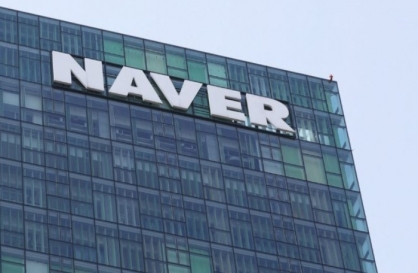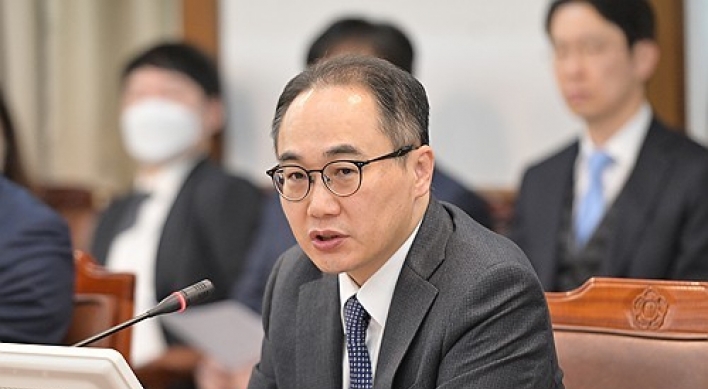[REPORTER'S COLUMN] Government fuled THAAD controversy
By Yoon Min-sikPublished : July 15, 2016 - 16:28
In an unprecedented move, South Korean military on Thursday revealed the locally operated units for the Green Pine radar and PAC-2 missiles to the press.
It was widely perceived as a desperate attempt to tackle the rumors that the 2017 deployment of Terminal High Altitude Area Defense system will threaten the health of local residents.
But the lack of communication, belated response and official’s frequent flip-flops about the advanced missile defense system may have worsened the controversy over THAAD.
On Wednesday, the military called on a press briefing to announce that Seongju-gun, North Gyeongsang Province has been selected as a spot to host the THAAD.
The location of the THAAD had been a contentious issue ever since South Korea and the U.S. kicked off talks for deployment in February, on the coattails of North Korea’s long-range rocket launch.
This was due to reports that the electromagnetic signal emitted by THAAD’s AN/TPY-2 are harmful to humans.
Cities and towns pinpointed as potential candidates have protested against the deployment, some even shaving their heads in mass protests.
Then, Wednesday’s 3 p.m. briefing was abruptly canceled without a clear explanation. Just five minutes later, it was announced that the briefing would proceed as planned.
Officials told reporters that there has been “confusion up there.” It was later revealed that it was because some officials wanted to wait until residents from Seongju -- on route to the ministry to complain – had arrived and were briefed by the Vice Defense Minister Hwang In-moo.
The last-minute flip-flop immediately raised questions about whether the government was in the driver’s seat in deciding where to station the THAAD unit, particularly against strong protests from China and Russia.
The government’s lackluster attempts to persuade Seongju residents also fanned further criticism. Vice Minister Hwang headed to the small town in the southern region only Wednesday morning, hours before the official announcement. During the meeting with Seongju residents, Hwang had mistakenly referred to Seongju as “Sangju,” an adjacent city – twice -- to much disdain from the residents.
Poor communication and efforts to persuade the Seongju residents were answered in form of boos, water bottles and eggs hurled at Prime Minister Hwang Kyo-ahn, who visited the county Friday morning.
The unilateral decision-making was reminiscent of the government’s attitude during last year’s decision to reinstate the state-authored history textbooks. The Park Geun-hye administration pushed ahead despite the number of petitions submitted to the Education Ministry opposing the plan being nearly double the ones agreeing to it.
It was also similar to the way the government handled the epochal agreement with Japan over the sex slavery of World War II. The agreement, which remained hushed until the last minute and is still opposed by groups representing the victims.
The Defense Ministry has also been inconsistent in explaining the effectiveness of THAAD.
Military officials have emphasized the strategic value of the THAAD, which they said will present multilayered protection against the North’s ballistic missiles across the Korean peninsula.
The existing PAC-2 missiles can intercept ballistic missiles at altitudes of under 40 kilometers, while THAAD can shoot down missiles at up to 150 kilometers above sea level.
But announcing that THAAD will be deployed in Seongju -- meaning it cannot protect the country’s most-highly populated region -- the ministry said THAAD would never have been effective in protecting Seoul and Gyeonggi Province.
The rhetoric of the ministry shifted slightly to say that Seoul area can be protected with multilayer Patriot missiles, and that the THAAD-Patriot combination would be for the rest of the peninsula.
Having promoted the THAAD as “the most accurate weapon system in history of mankind,” the ministry only admitted Wednesday that the missile defense system would be useless in defending Seoul. The capital has key facilities including the presidential office, the National Assembly, various government organizations including the Defense Ministry exists and is likely to be the primary target of the communist Pyongyang if a war is to ever break out.
Even the decision to unveil the PAC-2 and Green Pine units on Thursday was under dispute, as revealing the location of important military assets raise the possibility of an attack on them, particularly as the cited assets are crucial to keeping an eye on ever-more belligerent North Korea.
By Yoon Min-sik
(minsikyoon@heraldcorp.com)
It was widely perceived as a desperate attempt to tackle the rumors that the 2017 deployment of Terminal High Altitude Area Defense system will threaten the health of local residents.
But the lack of communication, belated response and official’s frequent flip-flops about the advanced missile defense system may have worsened the controversy over THAAD.
On Wednesday, the military called on a press briefing to announce that Seongju-gun, North Gyeongsang Province has been selected as a spot to host the THAAD.
The location of the THAAD had been a contentious issue ever since South Korea and the U.S. kicked off talks for deployment in February, on the coattails of North Korea’s long-range rocket launch.
This was due to reports that the electromagnetic signal emitted by THAAD’s AN/TPY-2 are harmful to humans.
Cities and towns pinpointed as potential candidates have protested against the deployment, some even shaving their heads in mass protests.
Then, Wednesday’s 3 p.m. briefing was abruptly canceled without a clear explanation. Just five minutes later, it was announced that the briefing would proceed as planned.
Officials told reporters that there has been “confusion up there.” It was later revealed that it was because some officials wanted to wait until residents from Seongju -- on route to the ministry to complain – had arrived and were briefed by the Vice Defense Minister Hwang In-moo.
The last-minute flip-flop immediately raised questions about whether the government was in the driver’s seat in deciding where to station the THAAD unit, particularly against strong protests from China and Russia.
The government’s lackluster attempts to persuade Seongju residents also fanned further criticism. Vice Minister Hwang headed to the small town in the southern region only Wednesday morning, hours before the official announcement. During the meeting with Seongju residents, Hwang had mistakenly referred to Seongju as “Sangju,” an adjacent city – twice -- to much disdain from the residents.
Poor communication and efforts to persuade the Seongju residents were answered in form of boos, water bottles and eggs hurled at Prime Minister Hwang Kyo-ahn, who visited the county Friday morning.
The unilateral decision-making was reminiscent of the government’s attitude during last year’s decision to reinstate the state-authored history textbooks. The Park Geun-hye administration pushed ahead despite the number of petitions submitted to the Education Ministry opposing the plan being nearly double the ones agreeing to it.
It was also similar to the way the government handled the epochal agreement with Japan over the sex slavery of World War II. The agreement, which remained hushed until the last minute and is still opposed by groups representing the victims.
The Defense Ministry has also been inconsistent in explaining the effectiveness of THAAD.
Military officials have emphasized the strategic value of the THAAD, which they said will present multilayered protection against the North’s ballistic missiles across the Korean peninsula.
The existing PAC-2 missiles can intercept ballistic missiles at altitudes of under 40 kilometers, while THAAD can shoot down missiles at up to 150 kilometers above sea level.
But announcing that THAAD will be deployed in Seongju -- meaning it cannot protect the country’s most-highly populated region -- the ministry said THAAD would never have been effective in protecting Seoul and Gyeonggi Province.
The rhetoric of the ministry shifted slightly to say that Seoul area can be protected with multilayer Patriot missiles, and that the THAAD-Patriot combination would be for the rest of the peninsula.
Having promoted the THAAD as “the most accurate weapon system in history of mankind,” the ministry only admitted Wednesday that the missile defense system would be useless in defending Seoul. The capital has key facilities including the presidential office, the National Assembly, various government organizations including the Defense Ministry exists and is likely to be the primary target of the communist Pyongyang if a war is to ever break out.
Even the decision to unveil the PAC-2 and Green Pine units on Thursday was under dispute, as revealing the location of important military assets raise the possibility of an attack on them, particularly as the cited assets are crucial to keeping an eye on ever-more belligerent North Korea.
By Yoon Min-sik
(minsikyoon@heraldcorp.com)




![[Graphic News] Number of coffee franchises in S. Korea rises 13%](http://res.heraldm.com/phpwas/restmb_idxmake.php?idx=644&simg=/content/image/2024/05/02/20240502050817_0.gif&u=)



![[Robert J. Fouser] AI changes rationale for learning languages](http://res.heraldm.com/phpwas/restmb_idxmake.php?idx=644&simg=/content/image/2024/05/02/20240502050811_0.jpg&u=)









![[Eye Interview] 'If you live to 100, you might as well be happy,' says 88-year-old bestselling essayist](http://res.heraldm.com/phpwas/restmb_idxmake.php?idx=652&simg=/content/image/2024/05/03/20240503050674_0.jpg&u=)
